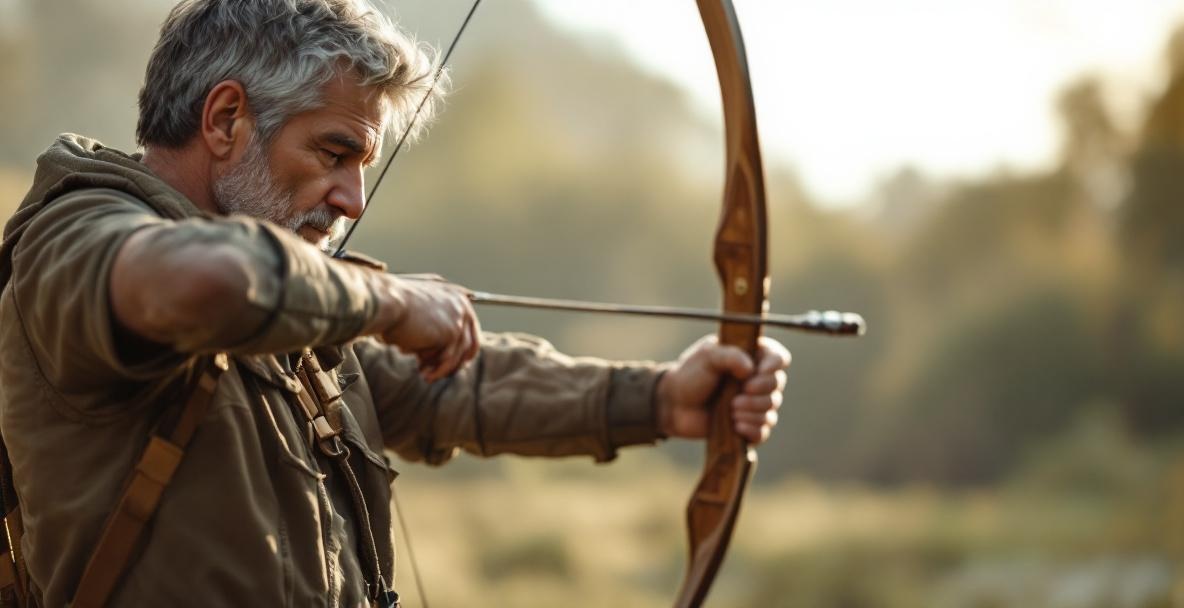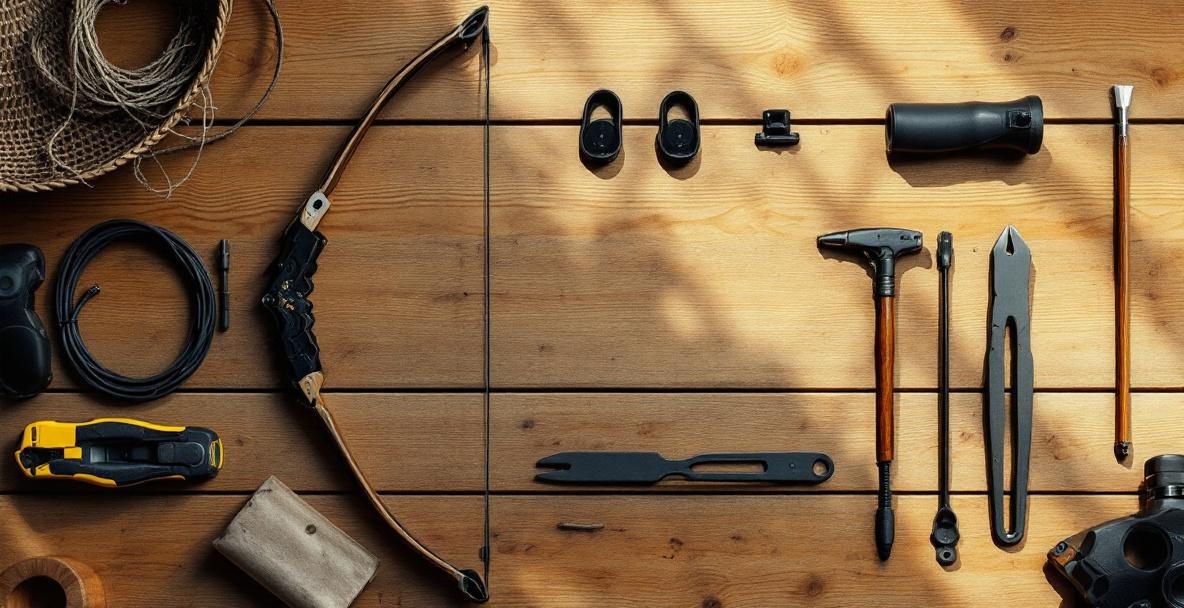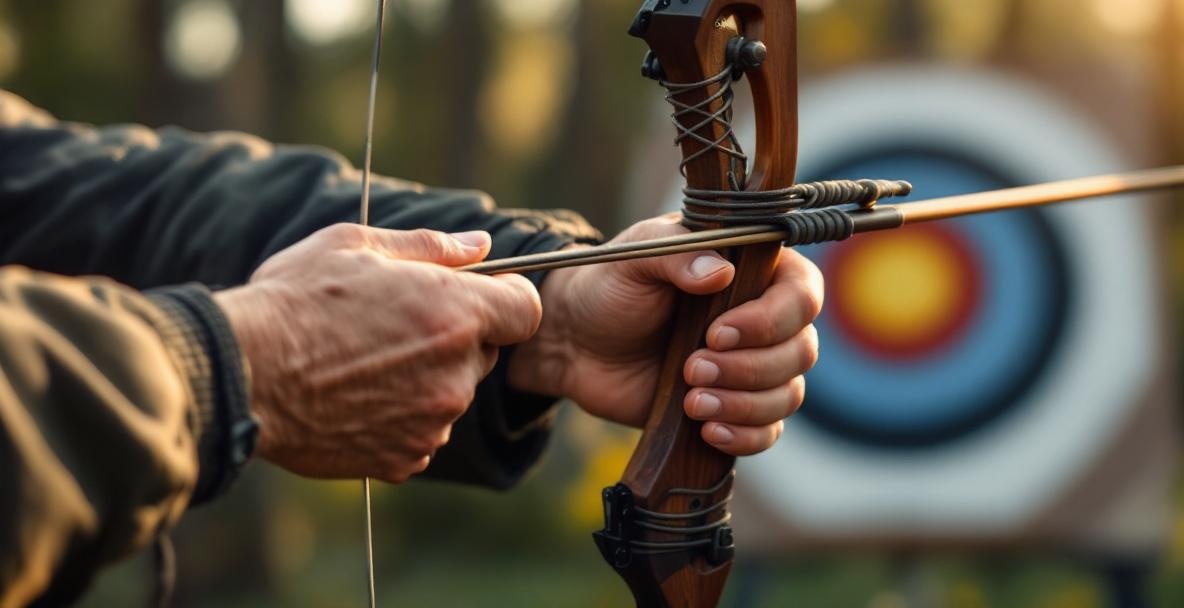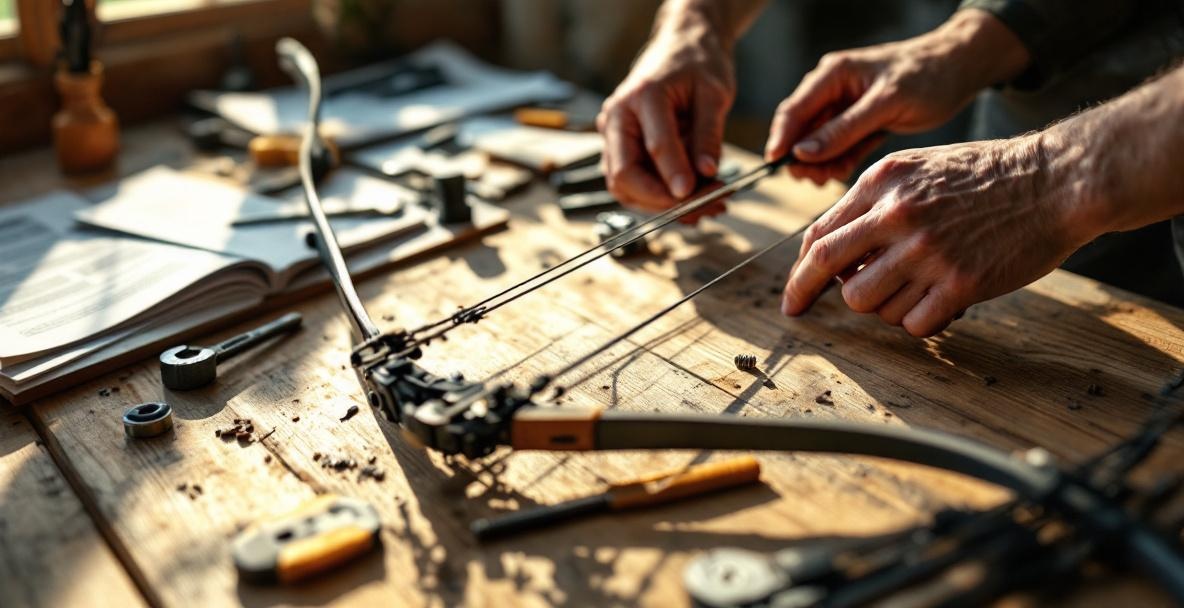Why Getting Your Recurve Bow Stringing Right Actually Matters

Getting your bow stringed properly can make all the difference in your shooting. A solid string job means better accuracy and keeps your gear in top shape. OneX Archery knows that a secure string not only improves your performance but also helps your bow last longer. It might seem tricky at first, but a few focused minutes learning the right way will boost your confidence and get you shooting like a pro.
Tackling the Challenges
Have you ever heard the dreaded snap of a broken limb? That sudden crack is something every archer wants to avoid. Bad stringing is a top cause of equipment damage. When you twist the limbs unevenly, your bow can warp or even break, turning your prized investment into a costly mistake.
Even without a dramatic snap, minor errors in tension can mess with your arrow flight, cutting into both your accuracy and consistency. We’ve seen many archers struggle with their shots only to discover that a bit of careless stringing was to blame.
"Bad stringing can easily lead to damaged limbs and a less accurate bow."
And don’t forget safety. A misbehaving bowstring can snap back unexpectedly and hurt your face, hands, or eyes. Taking the time to master the proper technique is well worth it for both your shooting and your safety.
What You’ll Learn from This Guide
Follow along and pick up a solid routine that lets you string your recurve bow safely and efficiently. In this guide, you’ll see clear, step-by-step techniques that ease the pressure on you and your gear while helping you develop proper form from the beginning.
A well-strung bow means consistent arrow flight and accurate target hits. When your bow is set up right, every shot feels smoother and true to its design, unlocking the full potential of your equipment.
Plus, mastering stringing gives you the freedom to handle your bow on your own. No more waiting around for help or feeling unsure at the range. The confidence you gain allows you to fully enjoy archery, whether you’re comparing different bow types or heading to your first competition.
Gear Up: Essential Tools to String Your Recurve Bow

Before you start, make sure you have all the essentials and know a few safety basics. OneX Archery has learned that the right preparation is key. Even though our specialty is precision stabilizer weights, a correctly strung bow is crucial for achieving those perfect shots. Let’s go over what you need to string your recurve bow safely and effectively.
Your Essential Gear
Start with a bow stringer. This handy tool helps you apply even pressure to both limbs while stringing your bow. It’s essentially a cord with little cups that fit over the limb tips, keeping your bow from twisting. We always recommend investing in a quality bow stringer for better safety and to protect your bow over time.
"A bow stringer is the most essential tool for stringing a recurve bow properly."
You’ll also need a bowstring that matches your bow’s specs. Check your manual or ask an expert, since the wrong string length can hurt performance. After stringing, many archers use bowstring wax to keep the string in great condition, which helps maintain string condition and extends its life.
A clean work surface-a table or bow stand-and having a friend lend a hand can make things easier too. A dedicated space keeps your equipment tidy and makes the whole process more comfortable.
Safety Tips
Staying safe while stringing your bow is a must. Never try to string your bow without a bow stringer because that can lead to accidents and damage your gear. Many archers have learned this the hard way, especially when trying the “step-through” method that might twist the limbs.
Before you begin, check your gear thoroughly. Look over your bowstring for any fraying and examine the limbs for cracks or splinters. Even small issues can turn dangerous under tension, so get any damage fixed right away.
Be sure to stand correctly-keep your body aligned with the bow and avoid awkward twists. Children and pets should stay clear of your work area because a bow under tension can be dangerous. If you’re new, consider wearing eye protection. These simple precautions help you get consistent results when you start shooting your recurve bow.
Step by Step: Stringing Your Recurve Bow
Now that you have everything ready, it’s time to string your bow. Using the right technique not only increases your bow’s lifespan but also improves your aim. There are two main ways to string a recurve bow-the classic step-through method and the safer bow stringer method. We’ll walk you through both, though we highly recommend the stringer method for its safety and reliability.
The Old-Fashioned Way
The old-fashioned, or “push and pull,” method has been used by archers for ages. It doesn’t require extra tools, but you do need good coordination and a bit of strength.
To try this method, start by placing the lower limb of your bow against the inside of your dominant foot and let the string hang loosely at both limb tips. Grab the bow by its grip and step through it with your other leg so the bow rests against the outside of your thigh. Push with your thigh while pulling on the grip to bend the bow enough for you to slide the loose end of the string into the groove on the upper limb.
It’s simple because no extra gear is needed. However, uneven pressure can twist or warp the limbs over time, which may reduce your bow’s shooting consistency and shorten its lifespan. Many beginners have accidentally damaged their bows this way, making the bow stringer method a much safer choice.
Stringing with a Bow Stringer
Using a bow stringer makes the whole process safer and easier. This tool ensures that both limbs get even pressure, protecting your bow and lowering the risk of injury.
Begin by attaching the larger pocket of the stringer to the lower limb (the one already fixed with the string) and the smaller pocket to the tip of the upper limb. With the cord running along your bowstring, stand on the middle of the stringer with your feet shoulder-width apart. Then, grab the bow handle and pull upward using your body weight to flex the limbs evenly. For more details, check this comprehensive bow stringing guide from hunter-ed.com. As your bow bends, slide the loose end of the string into the top nock and slowly release the tension so the string seats perfectly in the grooves.
This stringer method gives you consistent results and minimizes limb twisting. When done right, the string runs straight down the middle and the bow curves evenly. Keeping your bowstring in top condition with regular waxing, as shown here, will help it last longer.
"The bow stringer method has become our standard recommendation at OneX Archery because it gives reliable results and greatly lowers the chance of twisting."
After you finish stringing, do a quick safety check. Examine both nocks and gently pluck the string; a clear, resonant tone means your bow is ready for you to tackle more advanced shooting techniques.
Common Pitfalls and How to Dodge Them

Even seasoned archers can slip up when stringing their bows, but beginners often run into these typical issues. Knowing what to watch out for can really boost your technique and help improve your shots. Here are the two most common errors and how you can dodge them to keep your equipment safe and sound.
Error #1: Letting Your Limbs Twist
One risky error is allowing your bow limbs to twist during stringing. This usually happens if you apply pressure unevenly or if your bow isn’t set correctly in the stringer.
"Letting your bow limbs twist during stringing poses a big risk."
Twisting puts sideways stress on the limbs that they were never meant to handle. Over time, this can permanently warp them, hurt your accuracy, or even cause a complete failure during a shot. Many beginners end up with a damaged bow because of this mistake.
To avoid this, always center your bow on the stringer before you start and keep it level as you work. Make sure to apply pressure evenly along the entire length. Chiltern Archery offers excellent visual demos on proper alignment. After stringing, double-check by looking down the string-it should split the bow evenly into two parts. Taking these extra moments can protect your bow and boost your shooting.
Error #2: String Tension Troubles
Another common error is not setting the right string tension. Whether the string is too loose or too tight, the wrong tension can mess up your shooting and even damage your bow.
If the string is too loose, your arrows may not fly true, and you might notice a funny “twang” when you shoot, with power and precision lost. On the other hand, a string that’s too tight adds extra stress to the limbs, risking damage or even permanent bending. This is especially important if you’re new to choosing and setting up your first bow.
| Common Error | Symptom | Potential Issue | Quick Fix |
|---|---|---|---|
| Limb twist | Bowstring no longer splits limbs | Permanent warp; poor accuracy | Use a stringer and re-check alignment |
| Wrong brace height | String too close or too far from grip | Erratic arrow flight; extra limb stress | Adjust the string or get the right one |
| Skipping safety checks | Frayed string or unnoticed damage | Sudden equipment failure | Inspect your gear before every session |
Make sure your string matches your bow’s specifications by checking the manufacturer’s guide. October Mountain Products has useful video tutorials to help you fine-tune the tension. Typically, recurve bows work best when the brace height is between 7.5 and 9.5 inches, though it may vary. Use a bow square to measure and adjust as needed. Environmental changes, such as humidity or temperature, can affect tension, so be ready to make small tweaks over time.
At OneX Archery, we recommend making string tension checks a regular part of your routine. Just like our stabilizer weights help keep performance steady, proper care for your bowstring is key to developing a reliable shooting style.
Troubleshooting: When Things Don't Go as Planned

Sometimes even the pros run into issues while stringing their bow. If your first few tries aren’t perfect, don’t worry-solving problems is part of the learning process. OneX Archery has helped many archers work through common stringing challenges with our stabilizer systems. Here are some down-to-earth tips to fix the most frequent issues beginners face, so your bow always performs its best.
Tackling a Slack String
A slack string is more than just a nuisance; it can throw off your aim and even harm your bow. If you notice the string feels loose after stringing, avoid twisting it randomly because that can cause uneven tension.
"A slack bowstring can hurt your shooting accuracy and damage your bow."
Begin by unstringing your bow with your usual stringer tool. Look over the string carefully for any signs of stretching or wear. If it looks fine, try adding a few twists-about 5 to 10-in an even manner along its length, then re-string your bow.
If that doesn’t work, double-check that you have the correct string length. Choosing the right bowstring specifications is key. Most recurve bows need a string roughly 3 to 4 inches shorter than the bow’s full length. Using a string that’s too long will keep it slack, no matter how many twists you add. In that case, you’ll need a properly sized replacement.
Cutting Down on Bow Noise
Excess noise when shooting can be a sign that something’s off with your stringing. A well-strung recurve bow should be quiet and steady. If your bow sounds like a mini thunderclap with each shot, there are a few things to check.
First, inspect how the string sits in the limb notches. If it isn’t centered, extra friction can cause unwanted noise. Unstring and re-string the bow, making sure the string is perfectly centered in each notch.
Often, the noise is due to the string not being waxed enough. Proper bowstring wax application helps lessen friction and quiets the string. If it looks dry, apply a thin coat until it shines slightly-just enough to reduce noise without being greasy.
Lastly, check your accessories. Sometimes, what you hear isn’t from the string at all, but from loose arrow rests, stabilizer weights, or other parts. OneX Archery designs its stabilizer weights with secure threading to reduce vibration, but it never hurts to double-check that everything is tight.
Wrapping It Up: Now You Can String with Confidence
Great job making it through this guide on stringing your recurve bow. What once felt overwhelming should now seem much more manageable. Mastering your stringing technique sets you up for safer shooting and more consistent performance. Let’s quickly go over the highlights and look at what comes next.
What You Should Remember
Learning the right way to string your bow is about building a simple, safe routine that cares for your gear. Remember, using a bow stringer is a must to protect your limbs and secure the string in the nocks. Our step-by-step approach-from checking your equipment to the final inspection-helps create the consistent results you need for better shooting.
Avoiding errors like misaligned strings or uneven pressure will save you frustration and prevent damage. Take your time with each step, especially when you’re just starting. A well-strung bow lasts longer and boosts your shooting experience by keeping your draw weight steady.
Don’t be discouraged if it isn’t perfect at first. Like any archery skill, stringing gets easier with practice. If you run into problems, refer back to these troubleshooting tips-and remember, patience is key. Soon you’ll be stringing with confidence and even helping others learn how to do it right.
What’s Next for You
Now that you have the basics down, set aside some regular time during your shooting sessions to practice stringing and unstringing. We suggest doing it 3 to 5 times in one go until it becomes second nature. Keep your bow in top shape by using bowstring wax regularly.
Consider joining a local archery club or an online community to connect with fellow archers. Many clubs offer beginner workshops covering stringing, tuning, and basic maintenance. Watching seasoned archers can also give you useful tips that might not appear in written guides.
As your confidence grows, you might want to explore even more ways to improve your shooting. Comparing different bow types can open up new ideas, and accessories like stabilizers can upgrade your setup. Precision-engineered stabilizer weights can lessen hand shock and improve balance for a smoother shooting experience.
Ready to elevate your archery game now that you've nailed bow stringing? Explore our collection of premium stabilizer weights at OneX Archery and enjoy better balance, less vibration, and sharper accuracy with every shot.
Leave a Reply